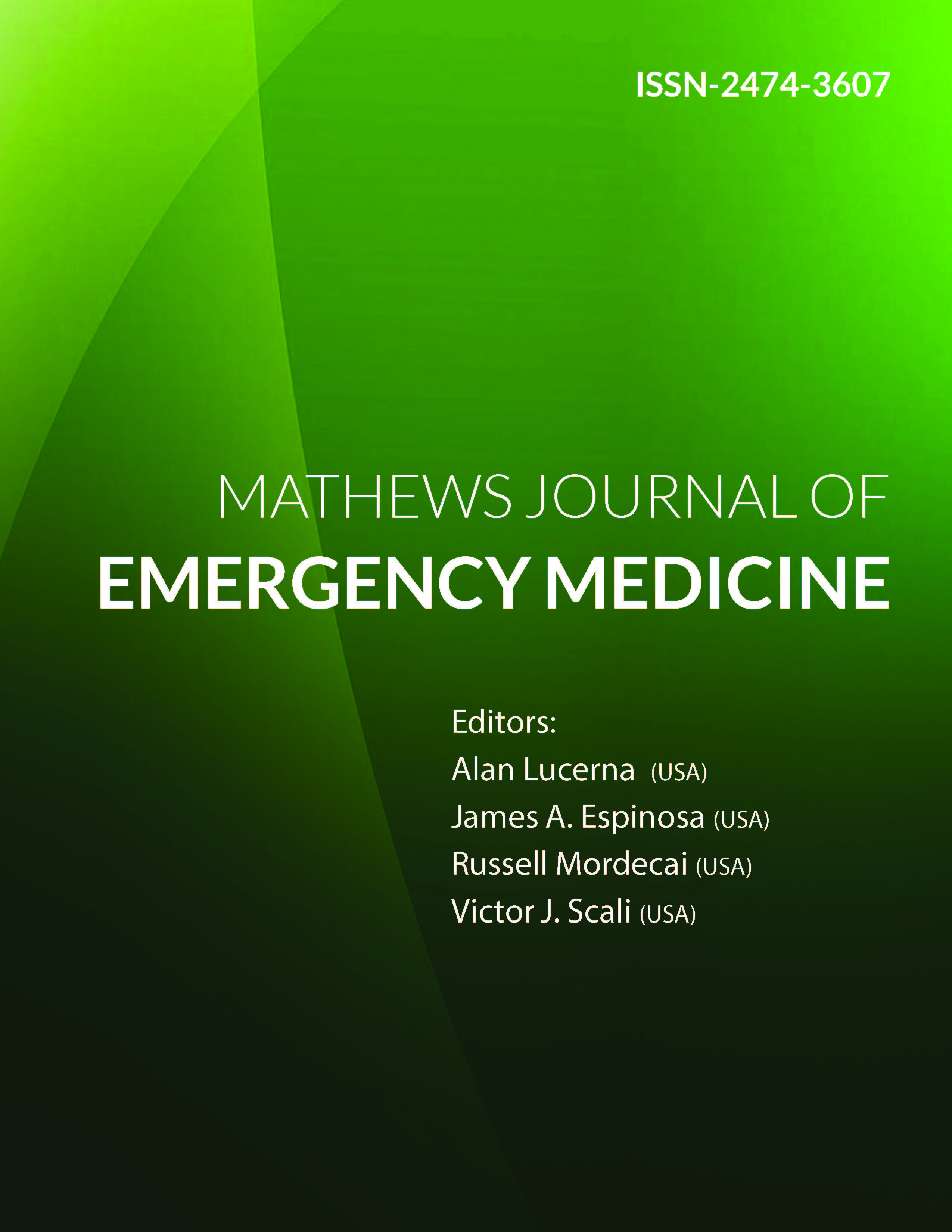
Information Links
Previous Issues Volume 7, Issue 1 - 2022
Towards Decreasing the Effect of Stethoscopes as Fomites in Healthcare Acquired Infections: Can Practitioners Tell Difference Between Disposable and Standard Stethoscopes and Gloved versus Ungloved Stethoscopes?
Razwana Wahdat1, Ramy Saleh2, James Espinosa3*, Lissa Diaz4, Shabnam Zarrabi5, Russell Mordecai3, Jacob Melnick1, Alan Lucerna3, Henry Schuitema6, Victor Scali3
1 Department of Emergency Medicine, Virtua Hospital, USA
2 Department of Emergency Medicine, Jersey City Medical Center, USA
3 Department of Emergency Medicine, Jefferson NJ/Rowan University SOM, USA
4 Department of Emergency Medicine, Crouse Hospital, USA
5 Department of Emergency Medicine, Princeton Healthcare System, USA
6 Department of Emergency Medicine, Jefferson, USA
*Corresponding Author: James Espinosa, Department of Emergency Medicine, Rowan University SOM/Jefferson Stratford, New Jersey, USA. Tel: 856 304 5101, Email: [email protected]
Received Date: May 19, 2022
Published Date: June 12, 2022
Copyrights: Espinosa J, et al. © (2022).
Citation: Wahdat R, Saleh R, Espinosa J, Diaz L, Zarrabi S, Mordecai R, Melnick J, Lucerna A, Schuitema H, Scali V. (2022). Towards Decreasing the Effect of Stethoscopes as Fomites in Healthcare Acquired Infections: Can Practitioners Tell Difference Between Disposable and Standard Stethoscopes and Gloved versus Ungloved Stethoscopes? Mathews J Emergency Med. 7(1):42.
ABSTRACT
Purpose of the study: The purpose of this study was to determine if participant emergency residents were to correctly identify a disposable stethoscope versus a standard stethoscope and also whether participants were able to identify a gloved standard stethoscope versus an ungloved standard stethoscope. Materials and Methods: The setting was the three emergency departments of a community-based, university-affiliated hospital system. The study was approved by the Institutional Review Board. The participants were residents in emergency medicine. They were asked to perform a first-pass assessment to determine if they could correctly could detect whether they were listening to volunteer resident lung sounds through a standard or a disposable stethoscope. Participants consented to the study. The subject will not be requested to identify the nature of the sounds. They were also asked to determine if they could detect whether a nitrile glove was, or was not, placed on a stethoscope. Thus, the practitioner’s ears, blinded visually to the presence or absence of the glove, would provide the first-pass assessment of the effect of nitrile gloves on acoustic performance on volunteer normal participants. All participants consented to the study. Results: 12 participants were able to correctly identify the disposable stethoscope (57%). Nine (9) participants could not (43%) The difference between the correct and incorrect identification was not statistically significant (p=0.37). Only 14% of participants were able to identify the gloved stethoscope. 86% of participants thought that the gloved stethoscope was a superior sound and that it was ungloved. Further research could confirm these findings. The inability to identify the correct (gloved) stethoscope was highly statistically significant (p=<0.001). Conclusions: Participants were not able to distinguish between the disposable and the standard stethoscope. 86% of participants felt that the ungloved stethoscope gave a superior sound and was the ungloved stethoscope. This pilot data recommends a larger study included assessment of disposable and gloved stethoscopes in identifying abnormal sounds.
Keywords: Stethoscope acoustics, disposable stethoscopes, nosocomial infections, gloved stethoscope